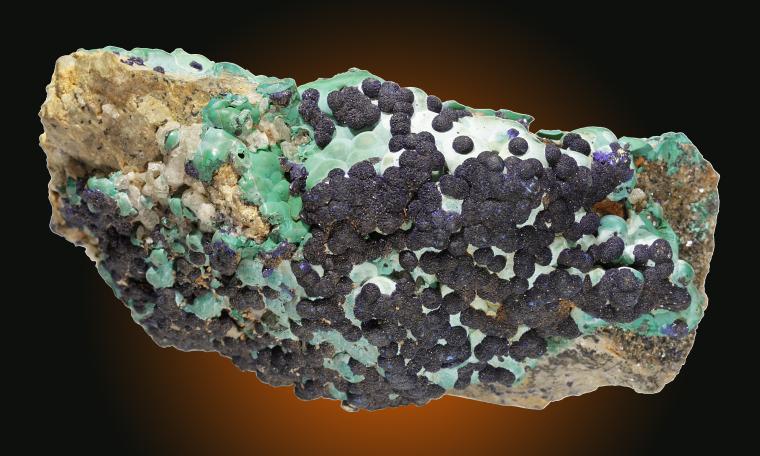Michigan Mineral Alliance
The Michigan Mineral Alliance was created in 2015 by a unique perpetual legal agreement between Michigan Technological University and the University of Michigan. For decades prior to the Michigan Mineral Alliance, the University of Michigan's mineral collection was not actively curated or exhibited. Its existence was threatened by financial pressures and shifiting trends in research. Now the University of Michigan's mineral collection is preserved in the public trust where it can continue to benefit future generations through shared responsibility and co-ownership of the Michigan Mineral Alliance. The A. E. Seaman Mineral Museum actively curates the collection and exhibits specimens from the collection at the museum's Thomas D. Shaffner Exhibit Hall in Houghton, at satellite exhibits located at the University of Michigan and elsewhere, and at mineral shows. To learn more about the University of Michigan mineral collection go to UM-Collection.
The Michigan Mineral Alliance is a model for preservation of university mineral collections (Bornhorst, Ewing, Poulsen, and Stefano, 2015, Geological Society of America Annual Meeting, Baltimore, Maryland, Paper No. 65-20). The unqualified transfer of responsibility and ownership to another institution can preserve a collection in the short-term but does not guarantee its long-term survival. An unqualified transfer was not acceptable to the University of Michigan as it would have meant irrevocable forfeiture of any interest in the collection (educational, scientific, or monetary). The Michigan Mineral Alliance is more complex and was negiotated at the local level by the Department of Earth and Environmental Sciences at the University of Michigan and the A. E. Seaman Mineral Museum of Michigan Tech followed by university level approval. The agreement results in equal co-ownership of the collection. However, only the more significant specimens are jointly controlled with all decisions requiring mutual consent whereas those of less significance are controlled by the museum despite equal co-ownership. Co-ownership recognizes mutual vesting in the fate of and access to the collection. Regardless of required approvals, all actions by the museum involving any specimen are reported to the University of Michigan. There is also an avenue for future return of the collection to the Univesity of Michigan if priorities change.
There are creative and innovative ways to reach a mutually beneficial alliance by viewing institutional constraints as opportunities for collaboration rather than barriers to success. While the negotiations were not easy, the Alliance would not have been possible without the steadfast recognition of responsibility to the public and to donors. Additional information on the Alliance can be provided upon request.


